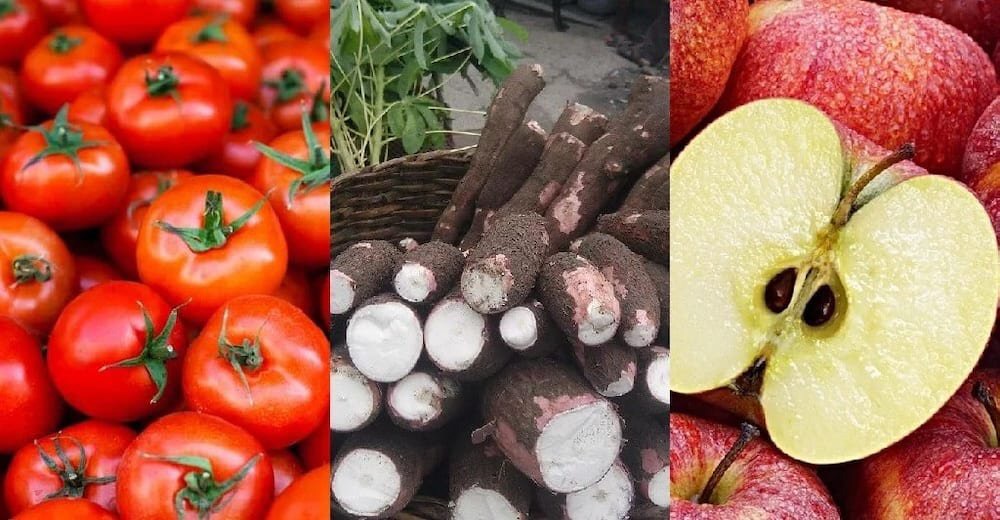If you were asked to name things that can kill us as humans, you would most likely not name common foods that we eat every day.
This is because we have been taught that these foods, particularly fruits and vegetables, are extremely healthful. But, as many of us are unaware, some of the foods are deadly and, if not consumed with caution, can result in death. We offers you seven typical foods in Ghana that you probably didn't realize are hazardous and can cause major health problems or even death.
1.Mushroom:
Mushrooms are very popular in Ghana because they are thought to have a high nutritional value and are relatively inexpensive compared to other protein sources. However, not all mushrooms are healthy to consume, including the Amanita phalloides, sometimes known as death cap mushrooms, which is thought to be highly tasty.
If consumed in high quantities, the death cap mushroom is reported to contain toxins that can cause vomiting, bloody diarrhea, severe stomach cramps, and even impair one's kidney and liver functioning.
Several people died after eating wild mushrooms in the Zimbabwean town of Epworth in 2009, according to VOA News, so be cautious when eating them.
2.Potatoes:
Potatoes are also widely available in Ghana. It includes the poisonous alkaloid solanine.
Solanine is one of the plant's natural defenses, but it also has pesticidal qualities, and consuming too much of it can be fatal.
Toxic symptoms emerge at levels of 2-5 mg/kg body weight, with deadly doses at 3-6 mg/kg body weight, according to studies.
It can induce stomach cramps, nausea, a burning sensation in the throat, headaches, dizziness, and diarrhea, as well as cardiac dysrhythmia, hallucinations, and death.
3.Pufferfish:
The pufferfish may not be well-known throughout the country, but it is certainly well-known in the Volta Region, where several deaths have been reported in recent years.
The pufferfish is one of the most dangerous fish on the planet. It includes tetrodotoxin, which is 1,200 times more lethal than cyanide, making it dangerous enough to kill 30 people at once with no known antidote.
4.Tomatoes:
Tomatoes are one of Ghana's most popular vegetables. There is hardly no cuisine that goes down in Ghana without a little of tomato in it, from soup to stew.
According to scientists, tomatine, a toxin found in the stems, leaves, and unripe fruits, is present in the popular vegetable.
The good news is that as the vegetable matures, the amount of toxins in it decreases dramatically, making ripe tomatoes very safe to eat. However, you should be cautious if you cut a tomato in half and the inside is still green.
5.Apple:
The old adage "an apple a day keeps the doctor away" has been around for a long time, and it demonstrates how well apples have been thought of in terms of good health.
However, because the seeds of your beloved and innocent-looking apples contain amygdalin, they can be dangerous if the consumer is not attentive.
When amygdalin interacts with human digestive enzymes, hydrogen cyanide is produced, which can be fatal in excessive concentrations.
6.Cassava:
Cassava is a major meal in Ghana, with more than half of the population eating or having eaten it at some point.
Its popularity among Ghanaians cannot be ignored, whether for fufu, 'yakeyake,' or even gari soakings.
However, when preparing any cassava-based meal, caution is advised because some species of cassava are known to contain high levels of cyanide. When consumed raw, the high quantities of "linamarin" and "lotaustralin" in cassava are claimed to convert to cyanide in the human digestive system.
This means that any cassava that has been improperly processed could be dangerous to people. It is known to produce Konzo, a paralytic disease that affects people in Africa and other parts of the world where cassava consumption is high.
7. Nutmeg:
Nutmegs should be one of Ghana's most popular spices. It's utilized in baked goods, confections, and spicy foods, among other things.
However, as prevalent as it is, it has the potential to be quite harmful if ingested in excess.
According to studies, even a teaspoon of the spice can cause hallucinations, nausea, an increased heart rate, dry mouth, and vomiting, among other dangerous side effects.
Simply leave it on the shelf and only use what you require at any given time.
So there you have it: foods you come into contact with practically every day yet had no idea could kill you. We hope you will be more cautious with them in the future.


